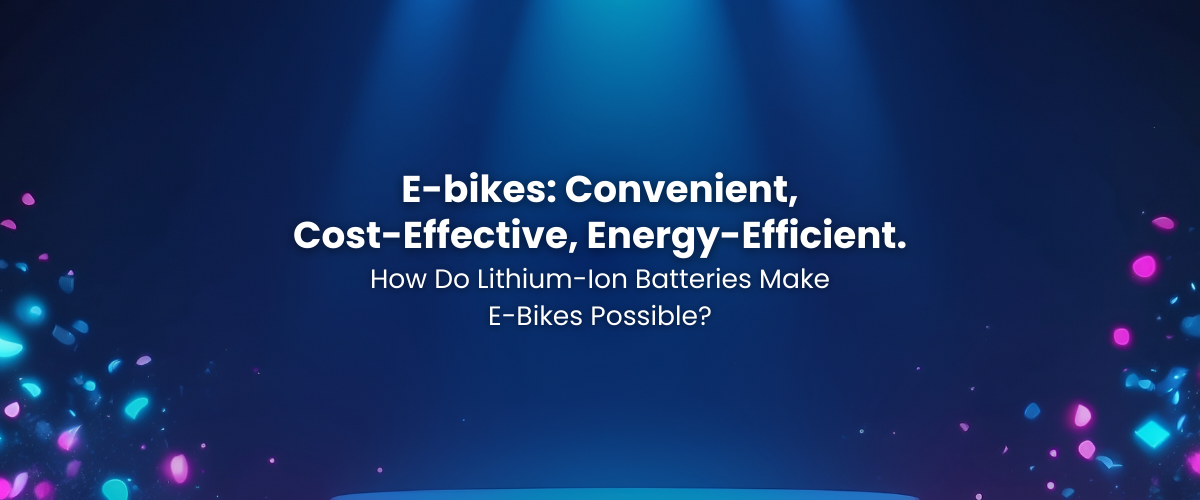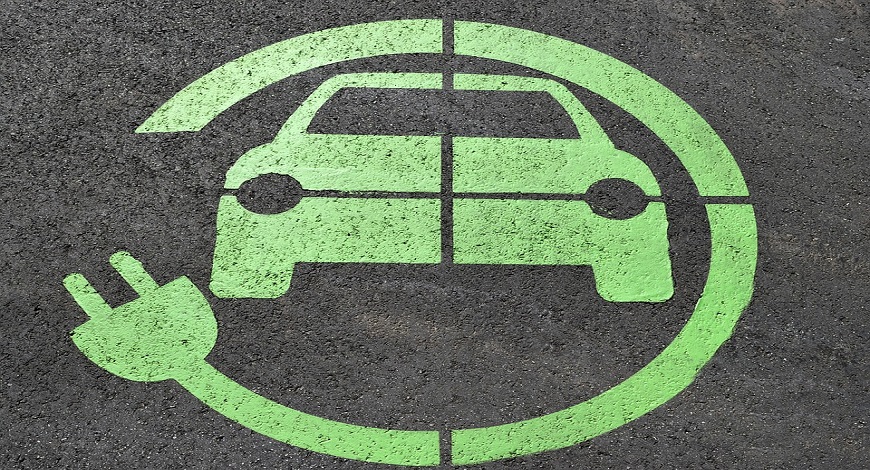
E-bikes, or electric bicycles, are bicycles that have an electric motor and a rechargeable battery that assist and complement the rider’s pedaling. E-bikes can offer many benefits, such as reducing greenhouse gas emissions, improving health and fitness, saving money, and sustainable mobility.
This edition of LOHUM Green Gazette explores some of the success stories of e-bikes in different domains, how lithium-ion battery make e-bikes possible, how their cost has fallen in recent years, and how can be recycled and reused.
Somewhat counterintuitively, the relationship between an E-Bike battery and the pedaling motion is that the battery provides power to the motor, which assists the pedaling. However, pedaling alone does not charge the battery significantly, as most of the energy is used to power the motor. Some e-bikes have regenerative braking systems, which can capture some energy during braking and store it in the battery, but this is not very common or efficient.
E-bikes can be a great option for individual users who want to enjoy cycling without exerting strenuous effort, especially on hilly or long-distance routes. E-bikes can also help people who have physical limitations, such as injuries, disabilities, or age-related issues, to keep cycling and stay active. For example, a study by the University of Colorado Boulder found that e-bike users improved their cardiovascular health and aerobic capacity after a month of riding.
According to a study by NREL, e-bikes serve unmet transportation needs while providing moderate to vigorous physical exercise. The study also found that e-bikes lower the exertion after riding, allow riders to dress appropriately for the weather, and experience higher levels of enjoyment from biking.
E-bikes can also be used for commercial purposes, such as delivery, courier, or rental services. E-bikes powered by lithium ion E-Bike battery can help businesses reduce their fuel and maintenance costs, increase their efficiency and productivity, and attract more customers.
For example, pizza brands in the Netherlands and Belgium have deployed a fleet of e-bikes to deliver pizzas faster and in a more eco-friendly way. In another example, micro mobility companies operating e-bike sharing systems in over 100 cities around the world saw a surge in demand and ridership in recent years.
E-bikes powered by Lithium ion battery for electric bike can also be used for sports and recreation, such as mountain biking, racing, or touring. E-bikes can enhance the performance and enjoyment of cyclists, as well as expand their range and possibilities.
For example, e-mountain bikes have become popular among enthusiasts who want to explore more challenging and diverse terrains, while e-racing bikes have been introduced in some professional cycling events, such as the UCI E-Mountain Bike World Cup and the E-Bike World Tour. Destinations such as California, Tuscany, and the Alps have additionally gained popularity for their e-bike services and infrastructure.
E-bikes are gaining significant traction in tourism and travel, as they can offer a unique and fun way to explore new places and cultures. E-bikes powered by a lithium ion E-Bike battery can enable tourists to cover more ground, access more attractions, and experience more scenery and diversity.
For example, e-bike tours have become a popular option for travelers who want to visit the iconic landmarks and landscapes of Europe, such as the Eiffel Tower, the Alps, or the Rhine River.
The key component that makes e-bikes possible is the lithium ion E-Bike battery, which stores the electrical energy that powers the motor and assists the pedaling. The most common type of battery used in e-bikes, by far, is the lithium-ion battery, which has several advantages over other types of batteries, such as lead-acid, nickel-cadmium, or nickel-metal hydride.
– Higher energy density: A lithium-ion E-Bike battery can store more energy per unit of weight and volume, which means they can provide more power and range for e-bikes while being lighter and smaller.
– Longer lifespan: A lithium-ion E-Bike battery can last longer and retain more capacity over time, which means they can support more cycles of charging and discharging for e-bikes while requiring less replacement and maintenance.
– Better performance: A lithium-ion E-Bike battery can perform better and more consistently under different conditions, such as temperature, humidity, or altitude, which means they can adapt to the varying needs and environments of e-bikes while offering more safety and reliability.
One of the main barriers that had previously prevented the widespread adoption of e-bikes is the high cost, largely driven by the cost of the lithium battery. However, in recent years, the cost of an E-Bike battery and e-bikes has fallen significantly, thanks to several factors, such as:
– Economies of scale: As the demand and production of e-bikes and e-bike batteries have increased, the costs of materials, labor, and overhead have decreased, resulting in lower prices and higher quality.
– Technological innovation: As the research and development of e-bikes and e-bike batteries have advanced, the efficiency, performance, and durability of the components have improved, resulting in more value and functionality.
– Market competition: As the number and diversity of e-bike and e-bike battery manufacturers and suppliers have grown, the prices have become more competitive and affordable, resulting in more options and choices.
According to a report by BloombergNEF, the average price of lithium-ion batteries has dropped by 89% in the past decade, from $1,183 per kilowatt-hour in 2010 to $137 in 2020. This trend is expected to continue, as the report projects that the price will reach $100 by 2023 and $58 by 2030. This means that the cost of E-Bike battery and e-bikes themselves will continue to become more accessible and attractive for consumers and businesses in the near future.
A lithium-ion battery for electric bike is composed of various metals, such as lithium, cobalt, nickel, manganese, and aluminum, which can be recycled, regenerated, and recirculated through battery recycling for various use-cases, such as making new batteries, electronics, or alloys.
– Reducing waste and pollution: Recycling lithium-ion batteries can prevent them from ending up in landfills or incinerators, where they can leach toxic substances or emit greenhouse gases, which can harm the environment and human health.
– Conserving resources and energy: Recycling lithium-ion batteries can reduce the need for mining and refining new metals, which can deplete natural resources and consume large amounts of energy, which can contribute to climate change and ecological degradation.
– Creating value and jobs: Recycling lithium-ion batteries can create new markets and opportunities for the circular economy, where waste is transformed into wealth and employment, which can foster social and economic development and innovation.
To promote and improve the recycling and reuse of lithium-ion batteries, and the circularity of e-bikes, some recommended measures are:
– Designing for recyclability: E-bike and e-bike battery manufacturers and designers can adopt principles and practices that make their products easier and safer to recycle, such as using standardized and modular components, labeling and coding the materials, and minimizing the use of hazardous substances.
– Raising awareness and education: E-bike and e-bike battery users and consumers can be informed and educated about the importance and benefits of recycling, as well as the available and convenient options and channels for disposing and returning their used products, such as collection points, drop-off centers, or take-back programs.
– Strengthening collaboration and coordination: E-bike and e-bike battery stakeholders and actors, such as governments, businesses, NGOs, and researchers, can work together and cooperate to develop and implement effective and sustainable strategies and solutions for recycling, such as creating incentives, subsidies, or regulations, sharing data, information, and best practices, and supporting innovation and research.
As part of LOHUM’s sustainability education initiative: LOHUM Foundation, our recent Sustainability Superheroes Winter Camp in 2023 had school kids of various ages and backgrounds convert regular old bicycles into e-bikes. The kids used a conversion kit with a lithium battery for electric bike, under expert guidance.
Related blogs
This entrepreneur wants India to make its own lithium-ion cells for electric vehicle batteries

Forbes India
Rajat Verma already recovers raw materials from used cells at his venture, LOHUM Cleantech. He wants to close the loop by making cells in India as well.
India needs integrated recycling and repurposing battery business model: Rajat Verma of LOHUM Cleantech

YOURSTORY
In an interaction with AutoStory, Rajat Verma, Founder and CEO of LOHUM Cleantech, speaks about building his company, and about battery manufacturing and repurposing as an industry.
Sourcing Raw Materials Is A Big Challenge In Li-ion Battery Space: Founder Lohum

Business World Disrupt
Recognized as ‘The Most Innovative Company of the year 2022’ by The Confederation of Indian Industry (CII), LOHUM is a producer of sustainable Li-ion battery raw materials
1800 572 8822
Email : enquiry@lohum.com
G98, Site, 5, Kasna, Block A, Surajpur Site V, Greater Noida, Uttar Pradesh 201306
LOHUM Cleantech Private Limited, Plot No. D-7 & 8, Site 5th, Kasna Industrial Area, Greater Noida, Gautam Budh Nagar, Uttar Pradesh – 201308
LOHUM Cleantech Private Limited, Plot No. O-17, Site 5th, Kasna Industrial Area, Greater Noida, Gautam Budh Nagar, Uttar Pradesh – 201308